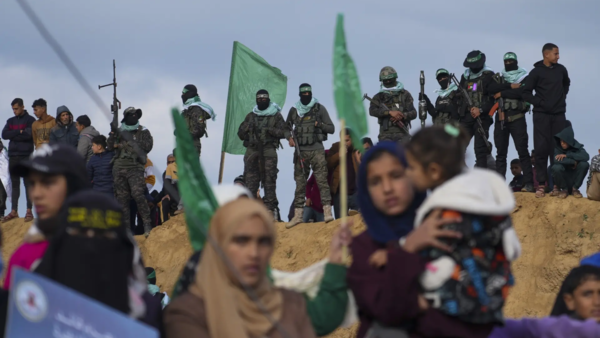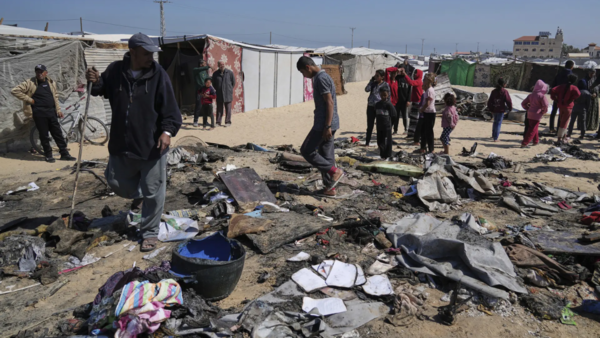As Israel enacts regulations and intensifies its military assault on the militant group, Hamas is dealing with a significant cash shortage in Gaza. The team’s ability to pay its combatants and government employees has been severely affected by the financial crisis, which indicates growing corporate gaps.
Israel’s unpleasant targets Hamas’s cash system
In recent months, Israeli troops have reportedly focused key numbers involved in Hamas ‘ domestic economic activities, according to a statement from the Wall Street Journal. Numerous political operatives and a well-known money change connected to terrorist funding were expelled or forced into hiding, according to Arab, Israeli, and American intelligence options. These agents played a significant role in the distribution of funds throughout the Gaza Strip.
In Gaza, some government employees ‘ salaries have stagnated as a result. During the Ramadan divine month, older soldiers and officers received only a portion of the total. A rank-and-file Hamas fighter’s typical monthly salary, which is now thought to be between$ 200 and$ 300, has now become unreliable.
Risks of transmission failure and malfunctioning pay systems
Even if Hamas also has physical cash reserves, Gaza’s money distribution has become extremely dangerous. Eyal Ofer, a researcher on Gaza’s business, quoted by the Wall Street Journal as saying,” Even if they sit on massive amounts of cash, their ability to distribute it would be very limited at this time. He added that it is possible for courier-based transfers or distribution points to be tracked and attacked by Israeli causes.

Palestinians in Khan Younis on February 20 photograph themselves as Hamas soldiers take up a position before handing over four systems to the Red Cross. ( Pic credit: AP )
In light of Israel’s resumed attacks in March, Hamas has become more dependent on casual, person-to-person income networks. The organization established supply points to spend fighters and workers either in dollars or with goods during the earlier ceasefire earlier this year.
From illicit sales to illicit cash,
Prior to the war, Hamas had a monthly funding source of$ 15 million from Qatar and raised money from other sources, particularly in Turkey, South Asia, and Africa. According to reports, the company had about$ 500 million in overseas reserves.
But, Israel quickly restricted real money transfers into Gaza once the fight started to worsen. In reply, Hamas seized about$ 180 million from regional banks, including the Bank of Palestine, and used charitable assistance as a source of income. In order to generate income, it collected income from retailers, imposed customs at checkpoints, and resold charitable goods.

Palestinians are seen examining the remains of an over Jewish airstrike-hit tent. ( Pic credit: AP )
Hamas’s ability to operate in these impromptu income sources was crucial. According to Moumen Al-Natour, a lawyer from Gaza’s Al-Shati immigrant station,” They were primarily dependent on humanitarian assistance sold in black markets for cash.”
As help cuts continue, charitable concerns grow.
Gaza is teetering on the verge of a more economic collapse as a result of the charitable aid shutdown in March. The two million occupants of the besieged area have been the subject of alarms from human rights organizations that warn of rising thirst and worsening conditions.
According to Jewish officials, stopping aid is necessary to stifling Hamas’s hold on power. Israel Katz, the country’s defense minister, recently stated that Israel is developing a new aid circulation strategy through its civil partners to prevent Hamas from receiving humanitarian aid.
Gaza’s issues are worsened by a dollar scarcity, which adds to the situation.
Gaza’s cash business is struggling as a result of both the support embargo and a lack of real currency. Before the battle, Israel’s central banks had frequently sent shekels to Gaza, but no fresh bills have been delivered since the conflict started.
Occupants are now attempting to actually clean and tap lost money to keep it in circulation because banks and ATMs are damaged or out of service. About$ 3 billion in cash may still be circulating, but it’s quickly deteriorating and becoming inaccessible, according to researchers.
Reduced funding reduces hiring and management
Hamas’s ability to attract new fighters and keep commitment in its ranks is also being hampered by the economic squeeze. The organization is struggling to maintain both confidence and get as Israel regains command of swathes of territory and Gazans voice unusual public opposition against Hamas’s leadership.
The economic decline is worsening the daily struggles of the average Gazan, who are now struggling to pay for basic necessities like food, medicine, and house.




